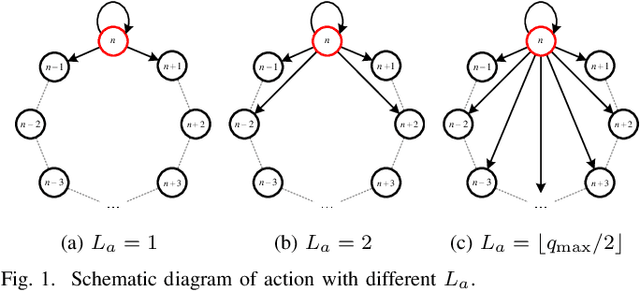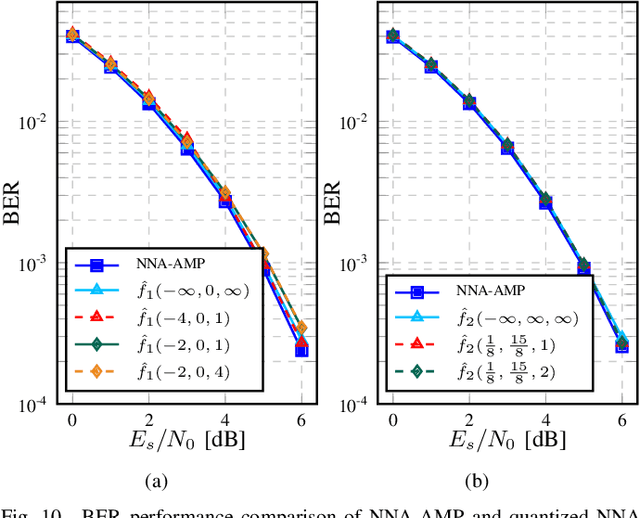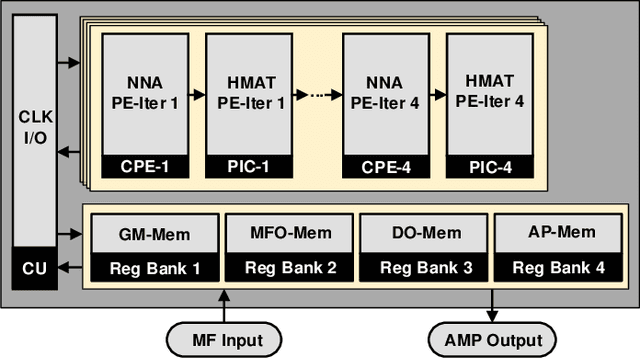Zhenhao Ji
Performance Analysis and Optimization of Network-Assisted Full-Duplex Systems under Low-Resolution ADCs
Dec 17, 2022Abstract:Network-assisted full-duplex (NAFD) distributed massive multiple input multiple output (M-MIMO) enables the in-band full-duplex with existing half-duplex devices at the network level, which exceptionally improves spectral efficiency. This paper analyzes the impact of low-resolution analog-to-digital converters (ADCs) on NAFD distributed M-MIMO and designs an efficient bit allocation algorithm for low-resolution ADCs. The beamforming training mechanism relieves the heavy pilot overhead for channel estimation, which remarkably enhances system performance by guiding the interference cancellation and coherence detection. Furthermore, closed-form expressions for spectral and energy efficiency with low-resolution ADCs are derived. The multi-objective optimization problem (MOOP) for spectral and energy efficiency is solved by the deep Q network and the non-dominated sorting genetic algorithm II. The simulation results corroborate the theoretical derivation and verify the effectiveness of introducing low-resolution ADCs in NAFD distributed M-MIMO systems. Meanwhile, a set of Pareto-optimal solutions for ADC accuracy flexibly provide guidelines for deploying in a practical NAFD distributed M-MIMO system.
Automatic Hybrid-Precision Quantization for MIMO Detectors
Aug 11, 2022



Abstract:In the design of wireless systems, quantization plays a critical role in hardware, which directly affects both area efficiency and energy efficiency. Being an enabling technique, the wide applications of multiple-input multiple-output (MIMO) heavily relies on efficient implementations balancing both performance and complexity. However, most of the existing detectors uniformly quantize all variables, resulting in high redundancy and low flexibility. Requiring both expertise and efforts, an in-depth tailored quantization usually asks for prohibitive costs and is not considered by conventional MIMO detectors. In this paper, a general framework named the automatic hybrid-precision quantization (AHPQ) is proposed with two parts: integral quantization determined by probability density function (PDF), and fractional quantization by deep reinforcement learning (DRL). Being automatic, AHPQ demonstrates high efficiency in figuring out good quantizations for a set of algorithmic parameters. For the approximate message passing (AMP) detector, AHPQ achieves up to $58.7\%$ lower average bitwidth than the unified quantization (UQ) one with almost no performance sacrifice. The feasibility of AHPQ has been verified by implementation with $65$ nm CMOS technology. Compared with its UQ counterpart, AHPQ exhibits $2.97\times$ higher throughput-to-area ratio (TAR) with $19.3\%$ lower energy dissipation. Moreover, by node compression and strength reduction, the AHPQ detector outperforms the state-of-the-art (SOA) in both throughput ($17.92$ Gb/s) and energy efficiency ($7.93$ pJ/b). The proposed AHPQ framework is also applicable for other digital signal processing algorithms.
 Add to Chrome
Add to Chrome Add to Firefox
Add to Firefox Add to Edge
Add to Edge